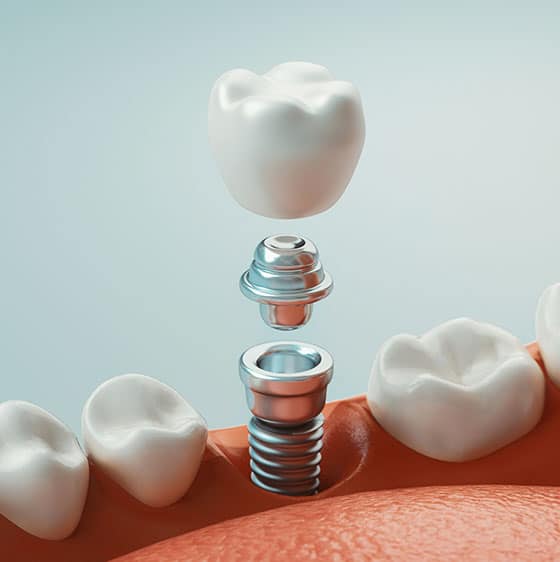Replacing a missing or failing tooth with a single-tooth implant

Dental Implant Process
The Single Tooth Dental Implant is anchored directly in the jaw deriving support from the bone. By stimulating the bone through functional force, the dental implant contributes to the survival of the bone. This will prevent atrophy that is often due to loss of function. Single tooth implants also spare natural teeth from an injury that’s typical in the fabrication of conventional fixed bridgework.
A dental implant replaces a single tooth without sacrificing the health of neighboring teeth. The other common treatment for the loss of a single tooth, a tooth-supported fixed bridge, requires that adjacent teeth be ground down to support the cemented bridge. Because a dental implant will replace your tooth root, the bone is better preserved. With a bridge, some of the bone that previously surrounded the tooth begins to resorb (deteriorate). Dental implants integrate with your jawbone, helping to keep the bone healthy and intact. In the long term, a single implant can be more esthetic and easier to keep clean than a bridge.
Gums can recede around a bridge, leaving a visible defect when the metal base or collar of the bridge becomes exposed. Resorbed bone beneath the bridge can lead to an unattractive smile. And, the cement holding the bridge in place can wash out, allowing bacteria to decay the teeth that anchor the bridge. The time frame for completing the implant and crown depends on many factors.
When the traditional method of placing an implant is used, the shortest time frame for a complete implant is about five months in the lower jaw and six months in the upper jaw. This includes surgeries and placing the permanent crown. However, the process can last a year or more, particularly if bone needs to be built up first. In another technique, implants and healing caps are placed at the same time as well as the crown, bridge, or denture at the same visit.

